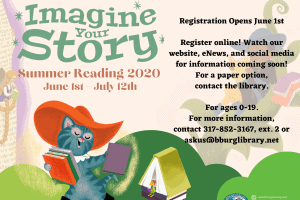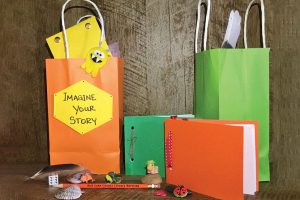
Preparing for summer reading is usually a year-round activity that kicks into high gear in the spring. But last year, as the COVID-19 pandemic gripped the US, preparations ground to a halt.
Brownsburg (Ind.) Public Library, where I work, abruptly closed last March. As was the case with many libraries, when we realized the virus wasn’t going away, we had to decide if we wanted to cancel our summer reading program or adapt it to our new normal.
We went ahead with summer reading to give our patrons something they could depend on amid the upheaval in our world. Our library reopened with limited services in June, but we stuck to a mostly virtual program. Though we wrapped with only 25% of our typical registration numbers, we learned a lot about our services and how we reach our patrons.
This year, as communities grapple with different realities and safety mandates—and libraries find themselves tackling their first or second summer reading program during the pandemic—I wanted to share how we handled tracking, promotion and prizes, and programming when our building was closed or capacities were limited.
Tracking. Last year we used an app called Beanstack for summer reading. Fortunately, we had discussed moving to an online tracking system before the pandemic. We were previously paper-only, but virtual is an easier option for most during a public health crisis. Though the app is easy to use, the transition involved a learning curve for staffers and participants alike. Plus, I still created paper trackers, which we distributed via mail, email, and curbside pickup.
This year it will be important for libraries to balance analog and virtual options, even as communities move toward some semblance of reintegration. Though many libraries have reopened, many patrons prefer curbside services and haven’t been in our buildings since before the pandemic. To reach everyone, we need to be as accessible as possible.
Promotion and prizes. Two years ago, we created a promotional video for our summer reading program that media specialists at local schools could share during students’ library time. In 2020 we created another video, but with schools closed, it wasn’t viewed by as many patrons.
Last year we also ordered prizes knowing that many of our usual sponsors were hit by the economic downturn and wouldn’t be able to donate. We decided to mail prizes to avoid additional in-person interactions. I sent out new sponsorship letters, giving businesses the option to help promote the program if they couldn’t back it financially.
This year we plan to create a new video and use last year’s leftover prizes. We will not be mailing prizes, which was costly. We will offer curbside pickup of prizes and continue to offer businesses nonmonetary ways to support us. For example, this winter we gave sponsors the chance to be a location in a book-themed scavenger hunt. We hope these alternatives give our local economy a boost and encourage future donations.
Programming. We never could have imagined how successful our virtual programs and take-and-make kits—such as our storytime shaker craft, our teen cooking club, and school-age mystery sets—would be with new and returning participants. We quickly learned this was an effective way to reach patrons who were unable to attend summer reading activities at a scheduled time, while our regular users told us they were just happy to see their favorite librarians or discover a new type of program.
As we discuss safely returning to in-person programming, we plan to continue our virtual and socially distanced options. For libraries still not convening indoors, consider live and recorded videos, passive programs, and take-and-make kits.
Overall, what did we learn from summer reading in a pandemic? It’s an opportunity—take it. Remember to be flexible, offer a little something for everyone, and don’t worry if it doesn’t go as planned.


